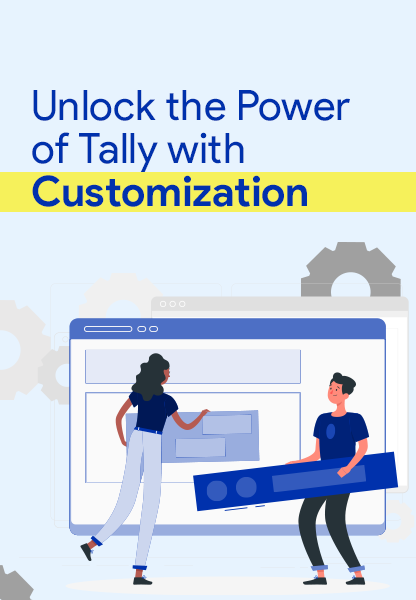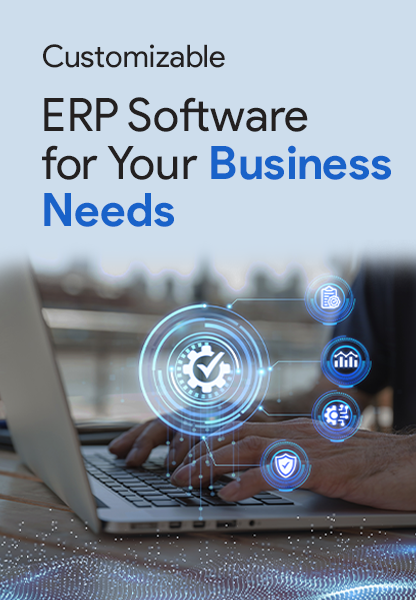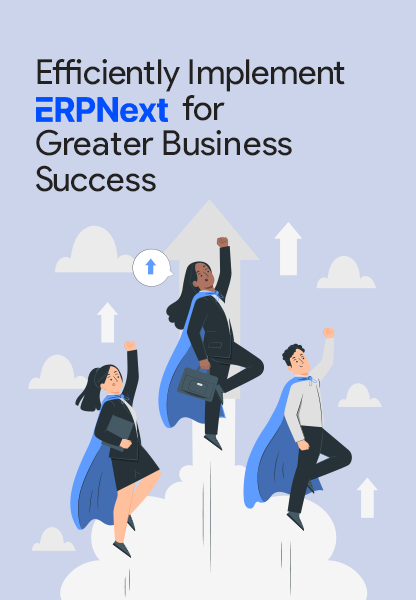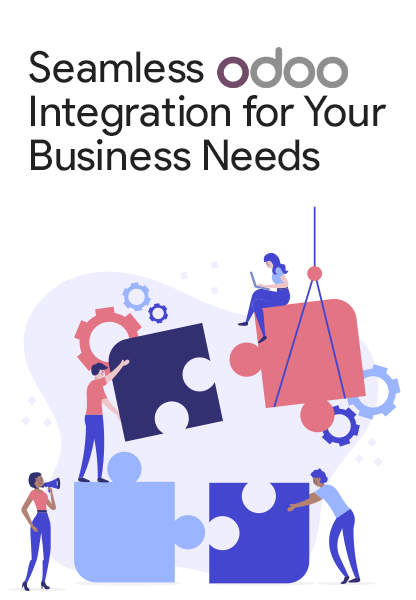
What is Collaborative Learning and how ERP helps
In today's interconnected world, effective collaboration and communication are paramount for businesses to address intricate challenges and harness the benefits of diverse perspectives and skill sets. These elements serve as a dynamic force propelling progress and innovation, enabling organizations to adapt and maintain their competitiveness. However, an Enterprise Resource Planning (ERP) system surmounts common hurdles that hinder the establishment of effective communication and collaboration practices within the workplace. Let’s delve into what is collaborative learning, and how ERP software improves team collaboration.
Understanding Collaborative Learning
Collaborative learning embodies an active learning approach wherein groups unite their efforts to attain a common objective. This form of learning encourages employees, students, and educators to engage in creative problem-solving and idea exchange. It offers an engaging avenue for learners to deepen their knowledge, transcending the boundaries of traditional educational methodologies. Whether it involves discussing a lecture or undertaking tasks across the globe, these methods foster skills that extend beyond conventional learning approaches.
Collaborative Learning in Organizational Context
Fostering a culture of collaborative learning empowers organizations to effectively share knowledge, foster relationships, and enhance productivity. This culture revolves around creating a shared environment within the organization. It further allows members to explore ideas, offer feedback, and collaborate on projects. It promotes creative approaches to problem-solving, and stimulates teamwork and communication among team members, ultimately enhancing overall team dynamics.
By implementing this learning approach, organizations can cultivate an atmosphere of mutual respect that, as a result, leads to more productive work practices.
Advantages of Collaborative Learning
Collaborative learning yields benefits for both employees within an organization and individuals, offering several advantages:
Improved Communication and Interpersonal Skills
Collaborative learning fosters classroom collaboration and facilitates open dialogue among peers. Team members engage in conversations beyond the curriculum, learning to embrace different viewpoints, solve problems collectively, and articulate ideas clearly. It also nurtures greater understanding and respect among individuals, providing ample opportunities for listening, sharing, and mutual learning.
Enhanced Problem-Solving Capacity
Collaborative learning is proven as an effective tool for enhancing problem-solving skills among team members or students. It certainly requires participants to collaborate, discuss their thoughts, and collectively devise optimal solutions to challenges. Learners gain insights from diverse perspectives and discover alternative approaches that can lead to more efficient outcomes. This collaborative approach encourages out-of-the-box thinking. Consequently, it enables participants to draw inspiration from each other and attain a deeper understanding of problem-solving strategies. It also equips them for tackling complex issues and future challenges.
Fosters Creativity and Deeper Understanding
Collaborative learning effectively broadens understanding and ignites creativity. When facing a specific subject, it promotes collective work among team members. This expands their perspectives on the topic. This process reinforces comprehension. It does so by encouraging individuals to share, challenge, and exchange ideas. As a result, it leads to a deeper understanding that goes beyond traditional teaching methods. Moreover, collective collaboration generates innovative ways of processing information, surpassing the limitations of individual capacity. It provides an ideal platform for pushing boundaries and creating multifaceted solutions while enhancing insights into subjects that might otherwise be considered straightforward or mundane.
Enhanced Knowledge Retention and Comprehension
This learning method proves highly effective in understanding and retaining knowledge. When students and employees learn together, they benefit from explanations from their peers. Engaging in meaningful dialogues enhances their understanding of the content. This learning approach encourages them to articulate their thoughts on what they've learned. It also prompts them to explore different perspectives, further enriching their understanding. Collaboration also makes learning more enjoyable and meaningful, fostering a supportive environment through discussion and exploration.
Efficient Time Management and Organizational Skills
Collaborative learning encourages employees to work closely with teammates, facilitating mutual learning and relationship-building. It nurtures effective communication and interpersonal skills while promoting open discussions and constructive criticism. Moreover, it prompts individuals to practice efficient time management by structuring tasks that accommodate everyone involved. Eventually, it fosters better organizational skills through task allocation.
Strengthened Teamwork
Collaborative learning has become a prevalent practice in today's workplace. This technique encourages employees to collectively pursue common goals, enhancing their skills, knowledge, and teamwork. By enabling team members to share ideas, input, and individual resources, it breaks down traditional communication barriers. Thus, group members collaborate more effectively and build relationships. As a result, it leads to greater goal achievement and success.
How ERP Software Support Collaboration and Communication
is crucial for promoting collaboration and communication in organizations. It does this by integrating and streamlining business processes and facilitating the sharing of information and resources. This software ensures effective collaboration by providing various departments access to the same real-time data. This access enables them to work together towards common objectives. Here are several ways in which ERP systems enhance collaboration and communication across departments:
Centralized Data Management:
ERP software functions as a single source of truth for all departments. It ensures that everyone can access consistent, accurate, and up-to-date data. This enhances data security and reliability. This promotes information sharing through reports, analytics, and performance metrics. As a result, it leads to informed decision-making and increased collaboration. This collaboration happens regardless of geographical location or time zone.
Collaboration Tools:
ERP systems offer real-time communication and collaboration features for remote teams working on time-sensitive projects. These tools include messaging, document sharing, video conferencing, and a shared project management platform that optimizes resource allocation, progress tracking, and cost reduction.
Automated Workflows:
ERP software streamlines cross-departmental processes through automated workflows, facilitating communication and providing role-based access to data and processes. This improves collaboration, and accountability, and reduces errors.
Standardized Processes:
ERP systems enable teams to document and communicate best practices and industry standards, establishing a common language and understanding.
Planning and Forecasting:
ERP software provides scenario planning and modeling capabilities. Besides, it allows stakeholders from various departments to test different scenarios and assess the potential impact of diverse decisions.
Analytics Leveraging:
While data analytics can be complex, ERP systems simplify this process by integrating with powerful business intelligence analytics and data visualization tools. This integration provides access to trusted insights, enhancing understanding of operations, customers, and markets.
Real-time Updates and Detailed Reporting:
ERP software consolidates data from multiple sources into a centralized database, generating comprehensive reports in various formats. This capability offers insights into business operations, facilitates the monitoring of cross-departmental key performance indicators, and tracks progress on shared objectives. Dashboards and charts can be readily shared with stakeholders.
Customer Relationship Management:
ERP systems equipped with a dedicated CRM module provide a 360-degree view of customer interactions across departments. This feature yields valuable insights into customer behavior, preferences, and trends. The centralized platform supports end-to-end customer engagement, empowering cross-departmental teams to collaborate more effectively.
Wrapping up
To sum up, ERP software plays a crucial role in enhancing collaboration and communication within organizations. They achieve this by serving as a centralized platform for data sharing, automating workflows, and providing valuable collaboration tools. By breaking down departmental silos, ERP systems empower teams to collaborate more efficiently. Also, it delivers improved outcomes in today's dynamic and fast-paced business landscape. Emerald Softwares is the ultimate source for hiring an outstanding ERP system for your business. So, get in contact with us to book a free demo now.









